The most important Archaeological Sites in Western Sicily
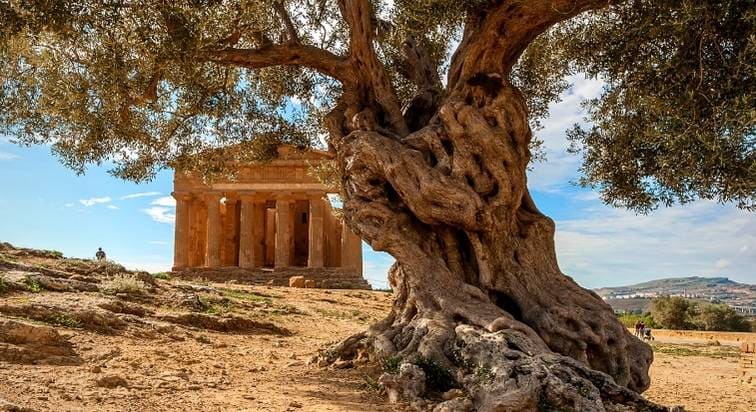
This guide to the most important archaeological sites in western Sicily completes the series of guides we have prepared to help you select the sites worth visiting for you.
You can also check our guide to the most important archaeological sites in Eastern Sicily, and our suggestions on the best archaeological sites to visit in Sicily with some practical information.
Archaeological Area of Agrigento
The town of Agrigento was founded by the Greeks, and most of the archaeological park lies still under the fields, but part of it was excavated to become the site we can visit nowadays: the Valley of Temples.
Today visitors can walk through an impressive row of perfectly preserved Doric temples, walking in the footsteps of the Greek inhabitants of the ancient city. That is why this precious historic site is one of the UNESCO World Heritage Sites.
The Valley of the Temples is characterized by the remains of Doric temples and sanctuaries. Outside the walls, it also includes a large necropolis as well as some hydraulic works, fortifications, and two important Agora.
The attribution of the temples to gods and goddesses is uncertain, and we call them names deriving from the speculations of scholars even though, in some cases, we know that those speculations were incorrect.
- The Temple of the Dioscuri consists of 4 columns in the shape of an L. This is what is left after earthquakes and fire. Nonetheless, this temple is one of the most renowned, as it is today the symbol of Agrigento.
- The Temple of Concordia along the Via Sacra – the sacred road – is one of the best-preserved temples, which even impressed Goethe while he was in Sicily for his Grand Tour of Italy. Like almost all Greek temples, it is aligned in an east-west direction. In particular, studies have been carried out in the past on its archaea-astronomic alignment with the rising of the sun during the spring equinox.
- The Temple of Hera Lacinia, or the Temple of Juno, is an archaic Doric temple. Archaeologists have found the signs of a fire that followed the Siege of Akragas, the ancient Agrigento, in 406 BC.
- The temple of Aesculapius, built outside the walls, was a place of pilgrimage for sick people. The walls were covered with the writings of the sick who had been healed.
- The temple of Olympian Zeus, or Jupiter, was the largest temple in the ancient known world, but it was destroyed by an earthquake in 1401. Here gigantic statues named Telamons were used as columns – a copy of Telamons is kept inside the park, while the original ones are in the archaeological museum of Agrigento.
- The temple of Heracles, or Hercules, was the oldest one, but today only eight columns are still standing.
- The temple of Vulcano is not well preserved, and today we can only see its foundations.
- The tomb of Theron, a large pyramid-shaped tuff monument, is thought to have been erected as a memorial to the fallen in the Second Punic War.
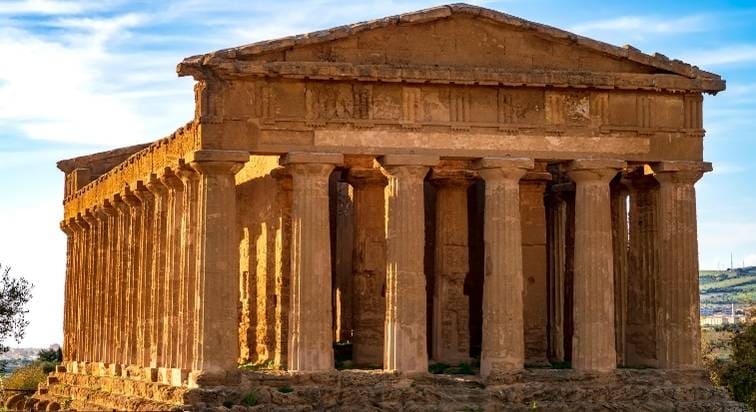
Why is the Archaeological Area of Agrigento worth visiting?
The Valley of Temples is one of the top ancient sites in Sicily worth visiting because the temples and the remains of the ancient settlement have remained as they were originally, never changed or converted in the course of history.
This makes Agrigento one of the most impressive examples of Doric architecture and Greek culture in the entire world.
Kolymbetra Garden
When visiting the Valley of Temples, you should not miss the Kolimbethra Garden.
This is a very special garden located inside the valley, also known as the Garden of Gods, and originally built under the tyrant Theron as a water reserve for the city.
In fact, 2500 years ago, the garden was a water tank used as a pool by the inhabitants of the city, and women used to gather there and wash clothes.
The water feeding the pool came through a number of artificial tunnels and chambers dug by the slaves captured in battle. These tunnels collected the waters that oozed from porous rock, the calcarenite, to convey them from the hill to the Kolymbetra basin, thus feeding the pool.
A century later, the pool was transformed into a garden, and the water coming through the tunnel was used to water plants.
It was abandoned for some time and finally flourished again, thanks to some private investments to become the beautiful garden it is today.
Visiting the garden now, you can admire citrus groves, olive and almond trees, and a mix of other vegetation typical of the Mediterranean bush
In addition, it is possible to privately visit the system of hypogea, the underground chambers, with the necessary safety equipment for an approximately 40 minutes tour, which needs to be arranged in advance and pre-booked.
If you like gardens, you should not miss the other famous Gardens of Sicily.
Ideas for a full itinerary including Agrigento
If you plan to visit Agrigento, you might consider flying to Palermo and combining the visit to the capital of Sicily with the Valley of Temples.
Agrigento fits well in a full exploration of the west Sicilian coast or even in a tour around the whole island if you have enough time at your disposal – usually at least two weeks.
If you like the idea of visiting more UNESCO sites in Sicily, our luxury tour of UNESCO World Heritage Treasures of Sicily might be inspiring for you.
The best option for accommodation in the area is the Hotel Villa Athena, one of the best hotels in Sicily (link), located right inside the Archaeological Park.
Selinunte Archaeological Park
Selinunte was an ancient Greek city founded in what is now the area around Trapani. The city had a short life, only 240 years.
In the year 409 b.C., the Carthaginians destroyed the city with an army of 5,800 men: 16,000 citizens were killed, 5,000 were enslaved, and 2,600 escaped to Agrigento.
The archaeological park shows what is left after the destruction due to the Carthaginians, as well as several earthquakes and centuries of neglect.
The ancient site is one of the largest in Europe, and we recommend having a private guide show the most important sites in about 2 hours. A full visit could last 4 or 5 hours.
The areas of the ancient site include:
- The Acropolis, the highest part of the city, is where visitors can walk along the ancient roads amid the remains of temples and fortifications, enjoying a magnificent view of the sea. Among the temples are also the ruins of a Byzantine village.
- The Necropolis, with three main burial areas: Buffa, Galera Bagliazzo, and Pipio Bresciana, together with Manicalunga Timpone Nero. In these areas, archaeologists found interesting evidence of the burial ceremonies.
- Gaggera Hill, with the remains of the oldest Selinuntine sanctuary dedicated to Dèmetra Malophòros, the goddess of fertility.
- Mannuzza Hill, in the north with ancient housing, is an area where only a few selected excavations have been completed.
- The East Hill in the east, with three ancient temples named Temple E, Temple F, and Temple G.
- Cave di Cusa, the stone quarries from which the material for the buildings in Selinunte was extracted. The extraction works were suddenly interrupted when in 409 b.C., the Carthaginian army defeated Selinunte after a 9-day siege.
Most of the artifacts found in the Selinunte area are preserved in the Archaeological Museum of Palermo, which is worth a visit for those who are passionate about archaeology.
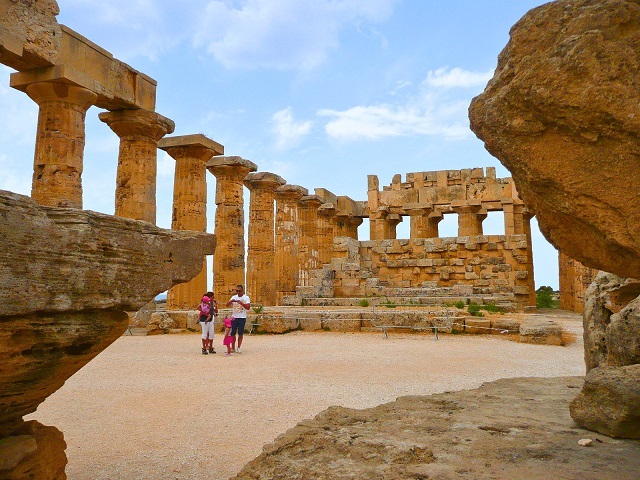
Why is Selinunte worth visiting?
The ancient site of Selinunte is the largest archaeological park in Europe.
Here visitors can walk along the ancient roads of the Acropolis, among the remains of temples and fortifications, which revealed much about the life, religion, and rites of the ancient Greeks. The site also offers great panoramic views over the sea.
Ideas for a travel program, including Selinunte
Selinunte is located on the northwestern coast of Sicily.
The visit can be combined with other famous cities in that area for a tailor-made itinerary, including Marsala, famous for its wine production, the enchanting village of Erice, the archaeological site of Segesta, and Palermo of course.
If you are fond of ancient civilizations, you might want to visit the archaeological museum of Palermo.
For golf lovers, we propose a special combination of Golf and Culture: must-see destinations on the western coast and award-winning golf courses, luxury seaside hotels, and excellent food and wines.
While exploring the area of Selinunte, you might choose to stay at the Foresteria Planeta Estate, a beautiful wine resort. You can find more information about Foresteria Planeta in our article on the hotels we recommend in Sicily (link).
Segesta Archaeological Park
Segesta was one of the major cities founded by the Elymians, an indigenous population probably of Italic origin. The city was never inhabited by a Greek population.
The excavations to investigate what was the structure of the city are still in progress. However, we know now that Segesta was originally made up of two acropolises and that the center of the city was not equipped with walls as it was defended by two natural, steep rocky walls.
Nowadays, the archaeological park consists of different areas, and the main monuments are:
- The Doric temple. It is considered one of the most interesting of Magna Graecia. From the temple, visitors can enjoy a beautiful view of the Gulf of Castellammare. The temple is at the center of a discussion among experts because it partly escapes the usual historical-architectural classification.
- The theater of Segesta. It is considered one of the most beautiful examples of an amphitheater of the classical period, and it is very well preserved. Thanks to its suggestive position and perfect sound amplification, the Segesta theater is still in use for special theatrical and musical performances.
Why Segesta Archaeological Park is worth visiting
The archaeological site of Segesta is among the best preserved in all of Sicily, despite the numerous transformations it has undergone through the centuries.
It is certainly one of the most evocative places thanks to the view and its position on the mountain.
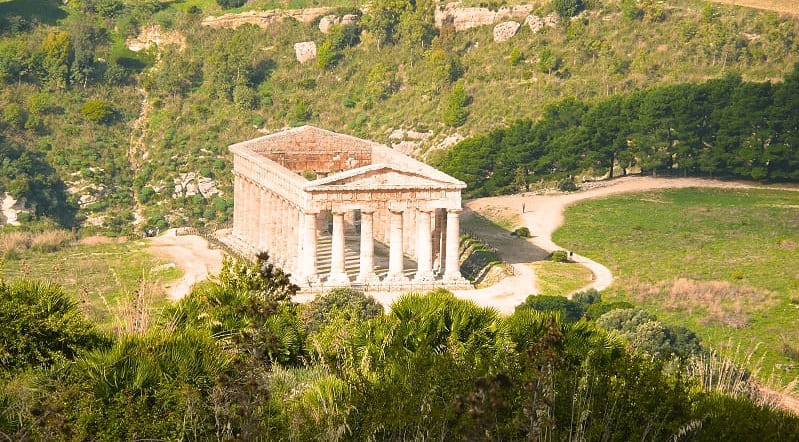
Ideas for an itinerary including Segesta
It is possible to combine a visit to Segesta in the morning with a tour of the lovely medieval village of Erice in the afternoon.
On the next day, you might go further and visit Selinunte and Agrigento.
If you have many days at your disposal, you can consider visiting more destinations on the west coast, like Marsala and Trapani.
In case you have two entire weeks at your disposal, you might plan for a circumnavigation of the whole island of Sicily.
Or you might even consider a combination of the best sites of the Amalfi Coast and Sicily – this is the itinerary we propose, and it can be adjusted according to your needs.
Villa Romana del Casale, The Mosaics of Piazza Armerina
The Villa Romana del Casale is a large ancient Roman villa outside the city of Piazza Armerina, which is technically in the center of the island of Sicily, only slightly closer to the eastern coast.
The villa we can see now is a one-story building with a monumental entrance and an area dedicated to thermal baths. It was so large that it could be considered a small citadel.
It certainly underwent many transformations, and this is also why it is difficult for historians to determine who was the owner of the estate. However, we know that the agricultural estate on which this villa was built was called the Filosofiana.
We also know that the Western Roman Empire was based on agriculture, so it was common to see luxury villas in rural areas. For the ancient Romans, every villa – no matter if built as a holiday site, located by the sea, or in the countryside, had to be productive.
Villa Romana del Casale today is listed as a UNESCO World Heritage Site as an example of a luxury Roman villa.
Why is Villa Romana del Casale famous?
The Villa Romana del Casale is famous for its magnificent mosaics of exceptional quality. It is also known as “mosaics of Piazza Armerina”. This is one of the reasons why the Villa Romana del Casale was inscribed by the UNESCO commission. Another reason is that it perfectly shows the predominant social and economic structure of its age.
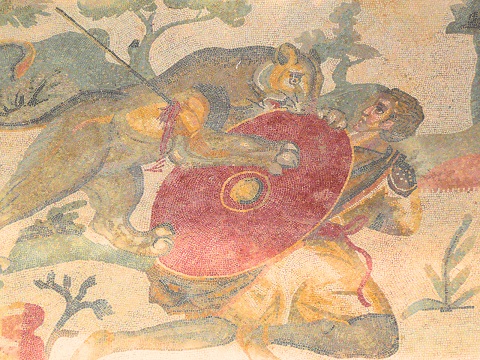
Ideas for a full program, including Piazza Armerina
The visit to the Villa Romana del Casale in Piazza Armerina can be combined with a tour of Caltagirone, a town famous for its ceramic and terracotta.
You might then continue to Ragusa, a city famous for its baroque-style buildings, and then proceeding southwards from Ragusa, you can also stop in Modica and Scicli.
We propose special food-related experiences in that area, like tasting a typical and unique type of chocolate made according to an ancient Aztec recipe in the town of Modica and a multisensorial experience with herbs, spices, and cooking in a kitchen garden in the Scicli countryside. All these experiences can be fully customized.
We suggest visiting at least some of the most important archaeological sites in eastern Sicily as this side of the island is equally rich in history, traditions, and art as the western side.
Good planning will help you enjoy some of the best experiences you can have when traveling to Italy.
